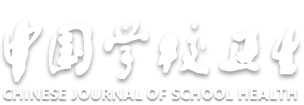Risk assessment analysis of infectious disease prevention and control in schools of Shangcheng District, Hangzhou
-
摘要:
目的 建立杭州市上城区学校传染病防控风险评估体系并确定各学校风险等级,并提出相应风险管理措施,为中小学校传染病防控工作提供科学的参考依据。 方法 基于失效模式和效应分析方法(FMEA),对2022—2024年杭州市上城区110所中小学校进行传染病防控风险潜在失效分析及现状调查,并通过K-Means聚类分析法划分风险等级。 结果 通过FMEA专家小组讨论,确定6个一级指标和28个二级指标,风险数前3位的分别为近3年学校发生传染病聚集性疫情按要求落实防控措施情况(189.00)、学生晨午/晚检情况(168.00)和近3年学校发生传染病聚集性疫情上报情况(144.00)。学校防控综合得分范围为61.00~98.00分(均值87.40),不同学段的学校平均得分和风险等级分布差异均无统计学意义(F/H值分别为0.95,1.47,P值均>0.05)。经K-Means聚类分析,以聚类中心93.25,85.78,79.69,70.29和61.00分划分为5个风险等级(F=309.21,P < 0.05),80%的学校属较低风险及以下。 结论 建立中小学校传染病防控风险评估体系,并根据学校风险等级分级进行管理,可以提高学校传染病防控的效率和效果,以进一步提升防控精准度与可持续性。 Abstract:Objective To establish a risk assessment system for infectious disease prevention and control in schools in Shangcheng District, Hangzhou and determine risk levels for each school, and propose corresponding risk management measures, so as to provide a scientific reference for infectious disease prevention and control in primary and secondary schools. Methods Based on the Failure Mode and Effects Analysis (FMEA) method, potential failure analysis and current situation investigation of infectious disease prevention and control risks were conducted in 110 primary and secondary schools from 2022 to 2024 in Shangcheng District, Hangzhou. Risk levels were classified using K-Means cluster analysis. Results Through expert panel discussions using FMEA, 6 first-level indicators and 28 second-level indicators were identified. The top three risk priority numbers were implementation of required prevention and control measures for clustered infectious disease outbreaks in schools in the past three years (189.00), student morning/afternoon health checks (168.00), and reporting status of clustered infectious disease outbreaks in schools in the past three years (144.00). The comprehensive prevention scores of schools ranged from 61.00 to 98.00 (mean: 87.40). There were no statistically significant differences in the average scores(primary school: 88.17±7.39, nine-year consistent education: 86.26±7.68, junior high school: 85.55±8.20, and high school: 88.72±4.91) and risk level distribution of schools with different educational stages(F/H=0.95, 1.47, P>0.05).K-Means cluster analysis divided the schools into 5 risk levels with cluster centers at 93.25, 85.78, 79.69, 70.29, 61.00 (F=309.21, P < 0.05), with 80% of schools classified as low-risk or below. Conclusion The infectious disease prevention and control risk assessment system for primary and secondary schools can be established, and hierarchical management can be conducted according to school risk levels, thereby improving the efficiency and effectiveness of school infectious disease prevention and control, and enhancing the precision and sustainability of prevention efforts. 1) 利益冲突声明 所有作者声明无利益冲突。2) 姚英和孙家逸为共同第一作者。 -
表 1 杭州市上城区中小学校传染病防控风险指标及得分情况
Table 1. Risk indicators and scores for infectious disease prevention and control among primary and secondary schools in Shangcheng District, Hangzhou City
一级指标 二级指标 得分(x±s) 得分率/% 1.传染病防控制度及保障(13分) 10.62±2.06 81.69 传染病预防控制工作小组(2分) 1.50±0.33 97.50 传染病防控年度工作计划或方案(3分) 1.59±0.19 94.50 传染病防控相关制度(3分) 2.90±0.41 96.67 传染病防控专项经费(3分) 1.09±1.45 36.33 传染病防控工作纳入年度工作考核(3分) 2.70±0.90 90.00 2.传染病常规监测(34分) 31.50±3.56 92.65 开展学生晨午/晚检情况(8分) 7.93±0.76 99.13 开展学生因病缺课登记情况(6分) 5.26±1.16 87.67 班级因病缺课相关情况及时上报(6分) 5.84±0.98 97.33 使用传染病症状监测预警系统开展工作(3分) 2.40±1.21 80.00 明确传染病疫情报告人和班级传染病症状监测报告人(4分) 4.00±0.00 100.00 开展教职员工症状监测(4分) 3.45±1.38 86.25 开展教职员工因病缺勤监测(3分) 2.62±1.00 87.33 3.传染病培训及演练(7分) 6.00±1.82 85.71 组织/参加过对校医务室及传染病报告人的传染病防控知识培训(3分) 2.54±1.09 84.67 2023年参与卫生健康部门对学校开展传染病防控培训情况(1分) 0.92±0.28 92.00 2023年组织开展传染病疫情及相关突发公共卫生事件应急演练情况(3分) 2.54±1.09 84.67 4.传染病健康教育(9分) 8.37±1.31 93.00 传染病健康教育纳入工作计划(1分) 0.92±0.28 92.00 定期开展传染病健康教育课程(3分) 2.75±0.83 91.67 教职员工开展传染病防控健康教育(3分) 2.97±0.29 99.00 家长开展传染病防控健康教育(2分) 1.73±0.69 86.50 5.传染病疫情控制(24分) 20.41±2.89 85.04 近3年学校发生传染病聚集性疫情情况(3分) 0.35±0.97 11.67 近3年学校发生传染病聚集性疫情上报情况(7分) 7.00±0.00 100.00 近3年学校发生传染病聚集性疫情按要求落实防控措施情况(8分) 7.05±2.59 88.13 辖区社区卫生服务中心或疾控中心沟通联系良好(6分) 6.00±0.00 100.00 6.基础卫生建设(13分) 10.50±1.16 80.77 卫生间卫生(3分) 2.24±0.54 74.67 食堂卫生(3分) 2.95±0.21 98.33 教室卫生(3分) 2.43±0.82 81.00 卫生室设置情况(2分) 1.89±0.31 84.50 卫生老师配置数情况(600∶1)(2分) 0.99±0.01 49.50 表 2 杭州市上城区中小学校传染病防控风险失效分析
Table 2. Failure analysis of infectious disease prevention and control risks in primary and secondary schools in Shangcheng District, Hangzhou City
二级指标 潜在失效模式 S O D RPN 近3年学校发生传染病聚集性疫情按要求落实防控措施情况 防控措施落实不到位或者不落实 7.00 6.00 4.50 189.00 学生晨午/晚检情况 不开展晨午检或流于形式 8.00 6.00 3.50 168.00 近3年学校发生传染病聚集性疫情上报情况 未上报疫情或上报不及时 6.00 6.00 4.00 144.00 学生因病缺课登记情况 未做因病缺课登记或登记不全 7.00 6.50 3.00 136.50 班级因病缺课相关情况及时上报 班级因病缺课情况不上报或上报不及时 7.00 6.50 3.00 136.50 辖区社区卫生服务中心或疾控中心沟通联系良好 缺乏沟通联系 6.50 5.50 3.50 125.13 开展教职员工症状监测 未开展教职员工症状监测 5.50 5.50 3.00 90.75 明确传染病疫情报告人和班级传染病症状监测报告人 疫情报告人不明确 6.00 5.00 3.00 90.00 传染病防控专项经费 无专项经费 6.00 4.00 3.50 84.00 卫生间卫生 无独立卫生间、未配备手清洗物品及规范消毒 6.00 5.00 2.50 75.00 使用传染病症状监测预警系统开展工作 未开展任何形式的传染病症状监测预警系统 5.50 5.00 2.50 68.75 开展教职员工因病缺勤监测 未开展教职员工因病缺勤监测 5.00 4.50 3.00 67.50 食堂卫生 未配备专门清洗消毒餐盘的消毒设置、手清洗物品及相关预防性消毒工作未开展 6.50 4.00 2.50 65.00 近3年学校发生传染病聚集性疫情情况 从未发生疫情 3.50 4.50 4.00 63.00 教室卫生 未配备应急消毒用品以及个人防护用品、通风不良及相关预防性消毒工作未开展 5.50 4.50 2.50 61.88 传染病防控工作纳入年度工作考核 未将传染病防控工作纳入年度工作考核 5.00 3.50 3.50 61.25 定期开展传染病健康教育课程 未定期开展传染病健康教育课程 5.00 3.50 3.50 61.25 传染病防控相关制度 无制度或者各项制度不全 6.00 5.00 2.00 60.00 组织/参加过对校医务室及传染病报告人的传染病防控知识培训 从未参加传染病防控专业培训 5.50 3.50 3.00 57.75 教职员工开展传染病防控健康教育 从未对教职员工开展传染病防控健康教育 5.50 3.00 3.50 57.75 2023年组织开展传染病疫情及相关突发公共卫生事件应急演练情况 未开展 5.00 4.50 2.50 56.25 卫生老师配置数情况(600∶1) 未配备或配备不足 5.50 4.50 2.00 49.50 传染病防控年度工作计划或方案 缺少传染病防控年度工作计划或方案 5.50 4.00 2.00 44.00 家长开展传染病防控健康教育 从未对家长开展传染病防控健康教育 4.00 3.00 3.50 42.00 传染病预防控制工作小组 缺少传染病预防控制工作小组 6.50 3.00 2.00 39.00 卫生室设置情况 卫生室、隔离观察室未设置 6.00 3.00 2.00 36.00 2023年参与卫生健康部门对学校开展传染病防控培训情况 未参与 5.00 3.50 2.00 35.00 传染病健康教育纳入工作计划 未将传染病健康教育工作纳入工作计划 5.00 3.00 2.00 30.00 表 3 杭州市上城区中小学校传染病防控不同风险等级管理主体分工分布
Table 3. Division distribution of responsibilities among management entities for infectious disease prevention and control in primary and secondary schools at different risk levels in Shangcheng District, Hangzhou City
风险等级 综合得分 管理主体 合计
(n=110)小学
(n=58)九年一贯
(n=17)初中
(n=23)高中
(n=12)高风险 < 67 每月属地疾控中心、社区卫生服务中心和区教育局共同督导 1(0.91) 1(1.72) 0 0 0 较高风险 68~77 每月属地社区卫生服务中心按要求督导,属地疾控中心和区教育局定期抽查指导 7(6.36) 2(3.45) 2(11.76) 3(13.04) 0 中风险 78~82 每月属地社区卫生服务中心按要求督导,属地疾控中心定期抽查指导 14(12.73) 9(15.52) 2(11.76) 2(8.70) 1(8.33) 较低风险 83~89 每月属地社区卫生服务中心按要求督导 35(31.82) 14(24.14) 5(29.41) 9(39.13) 7(58.33) 低风险 >89 属地社区卫生服务中心定期抽查 53(48.18) 32(55.17) 8(47.06) 9(39.13) 4(33.33) 注:()内数字为构成比/%。 -
[1] 翁熹君, 王锐, 王霄晔, 等. 2014—2016年全国学校(托幼机构)传染性突发公共卫生事件流行特征分析[J]. 疾病监测, 2019, 34(5): 446-450.WENG X J, WANG R, WANG X Y, et al. Epidemiological characteristics of infectious public health emergencies in schools(nurseries)nationwide from 2014 to 2016[J]. Dis Surveill, 2019, 34(5): 446-450. (in Chinese) [2] 康良钰, 刘珏, 刘民. 传染病风险评估方法研究进展[J]. 中国公共卫生, 2021, 37(10): 1454-1455.KANG L Y, LIU J, LIU M. Research progress in risk assessment methods for infectious diseases[J]. Chin J Public Health, 2021, 37(10): 1454-1455. (in Chinese) [3] 何梅, 王东, 鲜于剑波, 等. 失效模式与效应分析在新冠肺炎疫情防控中的应用探讨[J]. 中国卫生质量管理, 2020, 27(4): 27-30.HE M, WANG D, XIANYU J B, et al. Application of failure mode and effects analysis in COVID-19 epidemic prevention and control[J]. Chin J Health Qual Manage, 2020, 27(4): 27-30. (in Chinese) [4] 姚英, 沈毅, 胡锦峰. 失效模式与影响分析在传染病疫情报告与管理中的应用研究[J]. 中国预防医学杂志, 2017, 18(8): 597-600.YAO Y, SHEN Y, HU J F. Application of failure mode and effects analysis in infectious disease outbreak reporting and management[J]. Chin J Prev Med, 2017, 18(8): 597-600. (in Chinese) [5] 费雯, 韩俊萍, 耿洲, 等. 基于失效模式和效应分析法的PIVAS输液调配不规范行为的风险评估和管理[J]. 中国医院药学杂志, 2023, 43(10): 1154-1159.FEI W, HAN J P, GENG Z, et al. Risk assessment and management of non-compliant behaviors in PIVAS admixture based on FMEA[J]. Chin J Hosp Pharm, 2023, 43(10): 1154-1159. (in Chinese) [6] 中华人民共和国卫生部. 中小学校传染病预防控制工作管理规范: GB 28932—2012[S]. 北京: 中国标准出版社, 2013.Ministry of Health of the PRC. Regulation of infectious prevention and control in primary and secondary schools: GB 28932-2012[S]. Beijing: Standards Press of China, 2013. (in Chinese) [7] 中华人民共和国卫生部. 学校卫生综合评价: GB/T 18205—2012[S]. 北京: 中国标准出版社, 2012.Ministry of Health of the PRC. Comprehensive appraisement for health in school: GB/T 18205-2012[S]. Beijing: Standards Press of China, 2012. (in Chinese) [8] PUENTE J, PINO R, PRIORE P, et al. A decision support system for applying failure mode and effects analysis[J]. J Qual Reliab Manage, 2002, 19(2): 137-150. [9] LIPOL L, HAQ J. Risk analysis method: FMEA/FMECA in the organizations[J]. Int J Basic Appl Sci, 2011, 11(5): 49-57. [10] 陈宏标, 张蔚, 古子豪, 等. 深圳市校园传染病管理现状及防控策略研究[J]. 中国公共卫生管理, 2021, 37(6): 793-795.CHEN H B, ZHANG W, GU Z H, et al. Research on the current status and prevention and control strategies of infectious disease management in schools in Shenzhen City[J]. Chin J Public Health Manage, 2021, 37(6): 793-795. (in Chinese) [11] 北京大学儿童青少年卫生研究所, 联合国儿童基金会. 中小学校卫生制度汇编[M]. 北京: 联合国儿童基金会, 2014: 1-10.Institute of Child and Adolescent Health of Peking University, UNICEF. Compilation of school health regulations for primary and secondary schools[M]. Beijing: UNICEF, 2014: 1-10. (in Chinese) [12] 张欣. 新发传染病是学校卫生面临的永恒挑战[J]. 中国学校卫生, 2020, 41(5): 641-644. doi: 10.16835/j.cnki.1000-9817.2020.05.001ZHANG X. Emerging infectious diseases: a perpetual challenge in school health[J]. Chin J Sch Health, 2020, 41(5): 641-644. (in Chinese) doi: 10.16835/j.cnki.1000-9817.2020.05.001 [13] 郑琳. 杭州市西湖区中小学校和托幼机构传染病防控现状与对策研究[D]. 杭州: 浙江大学, 2015.ZHENG L. Research on the current status and countermeasures for infectious disease prevention and control in primary/secondary schools and kindergartens in Xihu District, Hangzhou[D]. Hangzhou: Zhejiang University, 2015. (in Chinese) [14] 李金涛, 张琼. 杭州市健康促进学校培育实践[J]. 中国卫生事业管理, 2020, 37(2): 118-120, 137.LI J T, ZHANG Q. Practices in cultivating health-promoting schools in Hangzhou[J]. Chin Health Serv Manage, 2020, 37(2): 118-120, 137. (in Chinese) [15] 张辉, 刘继锋. 西安市2006—2014年学校突发公共卫生事件流行情况分析[J]. 中华疾病控制杂志, 2016, 20(1): 104-106.ZHANG H, LIU J F. Epidemiological analysis of public health emergencies in schools in Xi'an, 2006-2014[J]. Chin J Dis Control Prev, 2016, 20(1): 104-106. (in Chinese) [16] 中华人民共和国教育委员会, 中华人民共和国卫生部. 学校卫生工作条例[Z]. 1990-06-04.State of Education Commission of the PRC, Ministry of Health of the PRC. Regulations school health work[Z]. 1990-06-04. (in Chinese) [17] 唐小哲, 刘瑶, 刘东山, 等. 中国内地中小学校医和卫生室配置情况调查[J]. 中国公共卫生, 2022, 38(5): 577-581.TANG X Z, LIU Y, LIU D S, et al. Allocations of school doctors and clinics in public primary and secondary schools across Chinese mainland: a general survey[J]. Chin J Public Health, 2022, 38(5): 577-581. (in Chinese) [18] 郑晓钧, 庄园, 彭春苗, 等. 深圳市福田区学校卫生人员传染病防控知识知晓情况及影响因素分析[J]. 中国校医, 2024, 38(9): 636, 719-721.ZHENG X J, ZHUANG Y, PENG C M, et al. Awareness of infectious disease prevention and control knowledge among school health staff in Futian District, Shenzhen, and its influencing factors[J]. Chin J School Doctor, 2024, 38(9): 636, 719-721. (in Chinese) [19] 丁俊飞, 赵玉秋, 廖家胜, 等. 症状监测系统在某县基层学校传染病防控中的应用及效果评价[J]. 安徽预防医学杂志, 2024, 30(5): 375-378.DING J F, ZHAO Y Q, LIAO J S, et al. Application and evaluation of a symptom surveillance system in infectious disease prevention and control at rural schools in a county[J]. Anhui J Prev Med, 2024, 30(5): 375-378. (in Chinese) [20] 秦怡, 何中臣, 黄元英, 等. 2010—2020年传染病防控研究的文献计量及知识图谱分析[J]. 现代预防医学, 2021, 48(3): 528-531.QIN Y, HE Z C, HUANG Y Y, et al. Bibliometrics and knowledge mapping analysis of literature on infectious disease prevention and control, 2010-2020[J]. Mod Prev Med, 2021, 48(3): 528-531. (in Chinese) -

 点击查看大图
点击查看大图
计量
- 文章访问数: 141
- HTML全文浏览量: 68
- PDF下载量: 36
- 被引次数: 0





 下载:
下载: